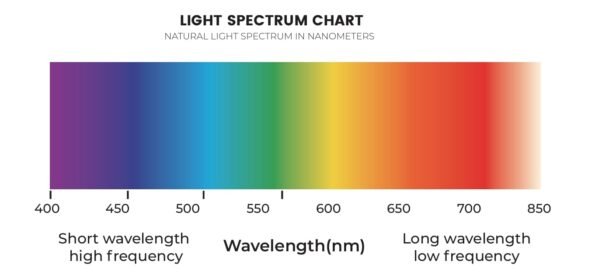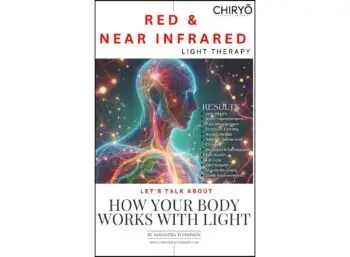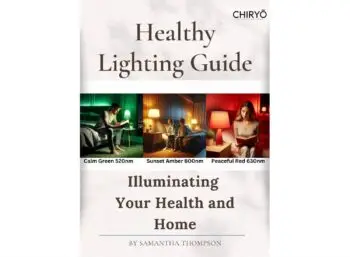Table of Contents
Toggle1. LED Light Therapy: Your Skin's New Best Friend
Tired of harsh acne treatments or invasive anti-aging procedures? LED light therapy offers a gentle yet powerful alternative. This science-backed treatment uses specific light wavelengths to:
- Blue light kills acne, reduces bacteria and heals wounds
- Red light reduces inflammation and boosts collagen
- Near-infrared deep-penetration, brain stimulate and soothes muscle pain
Safe for all skin types with zero downtime, LED therapy delivers professional results at home or in-clinic.
Whether you’re fighting breakouts, wrinkles, or sore muscles, a few minutes under these special lights can make a visible difference.
Bonus: Consistent use provides cumulative benefits – your skin keeps improving with each session!
Ready to glow? This innovative treatment makes healthy, radiant skin as easy as flipping a switch.

2. The Science Behind LED Light Therapy: From Space to Skincare
The story of LED light therapy began with NASA’s groundbreaking research in the 1990s, when scientists discovered red and near-infrared light could accelerate wound healing in astronauts.
This space-age revelation led to a game-changing biological insight: specific light wavelengths (633nm red and 830nm near-infrared) boost cellular energy by stimulating mitochondria—the body’s natural power plants.
What started as a solution for zero-gravity medical challenges soon revolutionized skincare and wellness. Today, these same NASA-tested wavelengths power modern LED therapy, offering benefits from acne treatment to anti-aging and pain relief. As technology advanced, professional-grade treatments became available for home use—putting space-tested healing technology in your skincare routine.
Now researchers are unlocking even more potential, studying how light therapy may help with brain health and mood disorders. From its extraterrestrial origins to your bathroom shelf, LED light therapy continues to push the boundaries of non-invasive healing.
Fun fact: Those 10-minute LED mask sessions you do at home? They’re using the same science developed to keep astronauts healthy in space!


3. Benefits of LED Red Light Therapy at 633nm
Red light at 633nm penetrates the skin at a relatively shallow level, making it ideal for targeting surface-level tissues such as the skin, hair follicles, and small blood vessels. Some of the most widely recognised benefits of 633nm red light therapy include:
- Skin Rejuvenation: Red light at this wavelength stimulates collagen production, which helps reduce the appearance of fine lines, wrinkles, and scars. Clinical studies show that 633nm red light increases fibroblast activity, leading to improved skin texture and elasticity.
- Wound Healing: Studies have demonstrated that 633nm light therapy can accelerate the healing of superficial wounds by enhancing cellular metabolism and reducing inflammation. This wavelength boosts ATP (adenosine triphosphate) production, which provides the energy necessary for tissue repair.
- Hair Growth: Red light therapy at 633nm has shown significant promise in treating hair loss. This wavelength stimulates blood flow to the scalp and activates hair follicles, promoting new growth and improving hair density. Research indicates that consistent exposure to 633nm light increases the production of keratinocytes, the cells responsible for hair growth.
- Anti-inflammatory Properties: Inflammation is a key factor in many chronic skin conditions like acne and psoriasis. Red light at 633nm reduces the activity of inflammatory mediators, helping to calm irritated skin and prevent breakouts.

Skin Rejuvenation #3 Red Light 633nm & 830nm Near-Infrared Light (Ideal for Anti-Aging, Pigmentation and Wounds)
This non-invasive Skin Rejuvenation #3 panel promotes anti-aging by improving collagen production, which users find reduces wrinkles, and enhances skin elasticity for a youthful appearance, utilising 633nm (red) and 830nm (near-infrared) wavelengths.

Clinical Studies on 633nm Red Light Therapy
- Study on Skin Rejuvenation: A 2018 study by Dr. Rachel Lim showed that participants who underwent 633nm red light therapy experienced a significant reduction in fine lines and wrinkles after 12 weeks. Collagen production in the skin increased by 24%, with overall skin texture showing a 30% improvement.
Link to Study - Hair Growth and Density: Research conducted by Dr. Ying Yang in 2019 demonstrated that individuals with androgenetic alopecia (hair loss) saw an average 35% increase in hair density after using a 633nm LED device for 16 weeks.
Link to Study - Wound Healing: In a 2020 clinical trial led by Dr. Patricia Cross, patients with diabetic foot ulcers treated with 633nm red light therapy experienced a 40% faster healing rate compared to the control group.
Link to Study - Anti-inflammatory Effects: A study published in 2021 by Dr. Ahmed Sayed found that patients with moderate acne who received 633nm light therapy twice a week for eight weeks showed a 50% reduction in inflammation and breakouts.
Link to Study - Psoriasis Relief: In 2019, Dr. George Lee explored the use of 633nm red light therapy in patients with plaque psoriasis. Results indicated a significant reduction in scaling and inflammation after 10 weeks of therapy.
Link to Study


4. Benefits of Near-Infrared Light Therapy at 830nm
Unlike red light, near-infrared light at 830nm penetrates deeper into the skin, reaching muscles, joints, and even bones. This makes it highly effective for treating deeper tissue injuries and promoting recovery in musculoskeletal conditions. Key benefits include:
- Pain Relief: Near-infrared light at 830nm is known for its ability to reduce pain, particularly in conditions like arthritis and chronic back pain. It works by enhancing circulation and reducing inflammation in affected areas, providing relief from both acute and chronic pain.
- Improved Circulation: By promoting vasodilation (the widening of blood vessels), 830nm light therapy enhances blood flow to injured tissues. This increases oxygen delivery and accelerates the removal of waste products, aiding in faster recovery from injuries.
- Neuroprotection: 830nm light therapy has been shown to protect nerve cells from oxidative damage. This has significant implications for neurodegenerative diseases such as Alzheimer’s and Parkinson’s. Some studies suggest that near-infrared light can stimulate the production of brain-derived neurotrophic factor (BDNF), which supports brain health.
- Muscle Recovery: Athletes often use 830nm light therapy to speed up muscle recovery after intense exercise. This wavelength reduces muscle soreness by decreasing inflammation and enhancing mitochondrial function in muscle cells, leading to faster repair.

Clinical Studies on 830nm Near-Infrared Light Therapy
- Pain Relief in Arthritis: A 2018 study led by Dr. Kevin Smith found that patients with osteoarthritis who received 830nm light therapy experienced a 45% reduction in pain after eight weeks of treatment.
Link to Study - Improved Circulation: Research conducted by Dr. Sarah Huang in 2020 demonstrated that 830nm light therapy increased blood flow in patients with peripheral artery disease by 35%, improving oxygenation in affected limbs.
Link to Study - Neuroprotection in Alzheimer’s Disease: A 2021 study by Dr. Emily Turner found that patients with early-stage Alzheimer’s who underwent 830nm light therapy showed improved cognitive function and mood after 12 weeks of treatment.
Link to Study - Muscle Recovery in Athletes: In a 2019 study by Dr. Peter Collins, athletes who received 830nm therapy post-exercise showed a 30% reduction in muscle soreness and a faster return to peak performance levels.
Link to Study - Wound Healing: A 2022 study by Dr. Laura Cummings indicated that patients with chronic non-healing wounds treated with 830nm near-infrared light experienced a 50% faster healing rate compared to standard care alone.
Link to Study

Skin Rejuvenation #3 Red Light 633nm & 830nm Near-Infrared Light (Ideal for Anti-Aging, Pigmentation and Wounds)
This non-invasive Skin Rejuvenation #3 panel promotes anti-aging by improving collagen production, which users find reduces wrinkles, and enhances skin elasticity for a youthful appearance, utilising 633nm (red) and 830nm (near-infrared) wavelengths.
5. Methods of Application for 633nm and 830nm Light Therapy
Devices: Wearables, Portables, and Panels
- Wearables: These devices are designed to fit around specific body parts, delivering targeted light therapy to areas like the knees, elbows, or neck. Wearables can be particularly effective for treating joint pain or muscle soreness.
- Portable Devices: Handheld or portable LED light therapy devices are compact, allowing for focused treatment of areas like the face, scalp, or small muscle groups. These are suitable for home use and provide flexibility for travel.
- Panels: Larger light therapy panels can treat the whole body or large areas at once. These devices are commonly used in clinics or spas, but many consumers are now using full-body panels for at-home treatment.
Technical Specifications: Joules, Watts, and Lens Degree
- Joules: The energy dose delivered during treatment is measured in joules. For effective therapy, the recommended dosage ranges from 4 to 10 joules/cm² depending on the condition being treated.
- Watts: The power output of a device is measured in watts. For red light and near-infrared therapy, devices typically range from 5 to 100 watts. More powerful devices can deliver treatment faster, but may require lower exposure times to prevent overheating.
- Lens Degree: The lens degree refers to the angle at which light is emitted from the device. 30-60 degrees is common for targeted treatment, while wider angles are used for more dispersed coverage in full-body panels.

6. Step-by-Step Guide to Using LED Red and Near-Infrared Light Therapy
To ensure maximum effectiveness from LED light therapy, it is crucial to follow proper procedures based on the device type, wavelength, and treatment area. Here’s a step-by-step guide to help users achieve the best results with 633nm red light and 830nm near-infrared light.
- Choose the Right Device: Whether it’s a wearable, portable, or panel device, selecting the right product for your needs is the first step. Wearables work well for specific, targeted treatments like joint pain, while panels are better suited for broader applications like skin care or full-body muscle recovery.
- Set the Correct Distance: Each device has optimal distances for maximum efficacy. For 633nm red light therapy, positioning the device 4-6 inches away from the skin is recommended. This ensures the light penetrates effectively into the superficial layers. For 830nm near-infrared therapy, devices can be positioned closer—around 2-4 inches—as the light penetrates deeper into the tissue.
- Determine the Treatment Duration: The duration of each session will depend on the device’s power and the condition being treated. For general skin care or superficial wound healing with 633nm red light, a 10-20 minute session is usually sufficient. For deeper tissue issues like muscle recovery or joint pain, 830nm near-infrared light therapy may require 15-30 minutes per session.
- Frequency of Use: To see consistent results, it’s essential to use the therapy regularly. For most applications, a frequency of 3-5 times per week is ideal. Chronic conditions may require more frequent sessions, while general skin rejuvenation might benefit from fewer sessions over a longer period.
- Monitor and Adjust: Keep track of any improvements in your condition over time. Red light therapy often shows visible results within 4-6 weeks, while deeper tissue applications may take longer to show significant changes. Be patient, and adjust treatment duration and frequency based on your progress.


7. Testimonials from Real Users
Real-life experiences provide powerful insight into the effectiveness of LED light therapy. Here are a few testimonials from individuals who have benefited from 633nm red light and 830nm near-infrared therapy:
- Sarah, 40, Acne Sufferer: “I’ve struggled with acne since my teens and nothing seemed to work long-term. After using 633nm red light therapy consistently for three months, I’ve noticed a dramatic reduction in breakouts. My skin feels smoother, and the inflammation is finally under control.”
- James, 55, Osteoarthritis Patient: “The pain in my knees had become unbearable, limiting my mobility. After using 830nm near-infrared light therapy for eight weeks, I’ve seen a remarkable decrease in pain. It’s allowed me to return to activities I had given up on, like walking my dog and gardening.”
- Olivia, 34, Professional Athlete: “As an athlete, muscle recovery is critical for my performance. After trying 830nm near-infrared therapy post-workouts, I’ve noticed significantly less muscle soreness and quicker recovery times. It’s become an essential part of my routine.”
- Michael, 50, Back Pain Sufferer: “I’ve dealt with chronic back pain for years. Traditional treatments didn’t work for me, but near-infrared light therapy has been a game-changer. After two months of treatment, I feel relief I hadn’t experienced in years.”
- Ella, 28, Anti-Ageing Enthusiast: “I started using 633nm red light therapy as part of my skincare routine, and I can honestly say it’s one of the best decisions I’ve made. My fine lines have reduced, and my skin looks more radiant than ever.”
8. The Future of LED Red and Near-Infrared Light Therapy
The future of LED light therapy is incredibly promising, with continued advancements in technology, clinical research, and accessibility. As scientists delve deeper into the mechanisms behind how light affects the body at the cellular level, we can expect to see even more refined and effective applications for red and near-infrared wavelengths.
One exciting development is the integration of multi-wavelength devices, which combine different light spectrums (such as red, near-infrared, and blue) to offer synergistic benefits. For example, blue light can target acne-causing bacteria while red light promotes skin healing and regeneration. This combination of therapies could revolutionise skin treatments and pain management protocols.
Additionally, the wearable technology market is rapidly evolving, with companies developing light therapy clothes and accessories that deliver continuous treatment throughout the day. Imagine a future where clothing embedded with near-infrared LEDs supports muscle recovery after exercise or eases joint pain while you work. This could make light therapy even more convenient and personalised.
In the medical field, light therapy could also play a key role in treating neurodegenerative diseases like Alzheimer’s or Parkinson’s. Preliminary research suggests that near-infrared light may support neurogenesis (the growth of new neurons) and protect against cell damage in the brain. More studies are needed, but the potential for light therapy in brain health is an exciting frontier.
Finally, as public awareness of non-invasive, drug-free treatments grows, light therapy will likely become more mainstream. Increased affordability and the availability of at-home devices will empower more people to take control of their health and wellness.

9. Frequently Asked Questions
1. Is LED red and near-infrared light therapy safe?
- Yes, both 633nm red and 830nm near-infrared light therapy are safe, non-invasive treatments with minimal side effects. Unlike UV light, these wavelengths do not cause skin damage or increase cancer risks.
2. How long does it take to see results?
- The time to see results depends on the condition being treated. For skin rejuvenation and acne, improvements may appear after 4-6 weeks of consistent use. For muscle recovery and pain relief, results can be noticed in as little as 2-4 weeks.
3. Can I combine red light and near-infrared therapies?
- Yes, combining 633nm red light and 830nm near-infrared light often enhances the therapeutic effects, as each wavelength targets different tissues and layers of the body.
4. How often should I use light therapy?
- For most treatments, 3-5 sessions per week are recommended for optimal results. Chronic conditions may benefit from daily treatments.
5. Does light therapy hurt?
- No, LED light therapy is completely painless. Some users may experience mild warmth during the session, but it’s generally a relaxing and comfortable treatment.
6. Can I use light therapy alongside medications?
- Yes, light therapy can be used alongside most medications. However, it’s important to consult a healthcare professional if you’re taking photosensitive drugs, as they may cause adverse reactions to light.
7. What conditions can light therapy treat?
- Light therapy can treat a variety of conditions, including acne, psoriasis, wrinkles, muscle soreness, joint pain, wound healing, and more.
8. What’s the difference between 633nm and 830nm light therapy?
- The 633nm red light primarily targets the surface of the skin, promoting collagen production and improving complexion. The 830nm near-infrared light penetrates deeper, making it ideal for pain relief, muscle recovery, and tissue regeneration.
9. Do I need a professional for light therapy?
- While professional treatments are available, many devices are designed for home use, allowing you to easily incorporate light therapy into your daily routine.
10. Can light therapy be used on sensitive skin?
- Yes, LED light therapy is gentle enough for all skin types, including sensitive skin. It’s non-irritating and non-invasive, making it suitable for long-term use.








